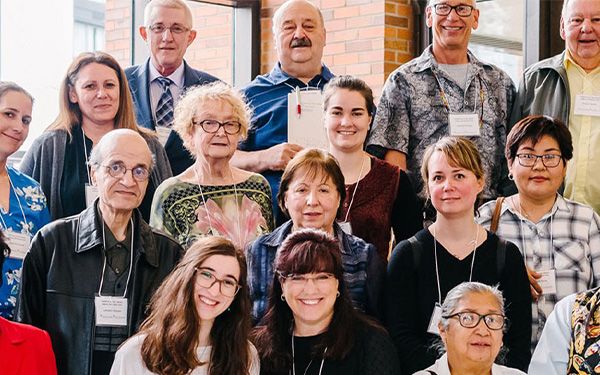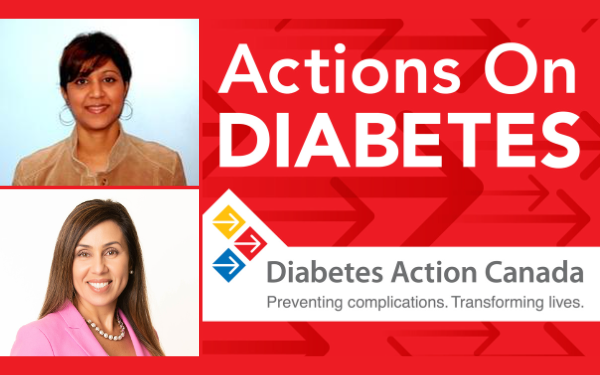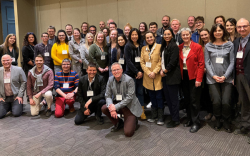
Patient Partner Profile – Seeta Ramdass


Patient Partner Profile – Seeta Ramdass
By kristalamb | Posted date: July 12, 2023 |
For Seeta Ramdass patient engagement is critical to the success of any health care project. That’s one of the reasons she was excited to learn about Diabetes Action Canada, where she would have the opportunity to not only play an active role in research projects, but also to use her career experience to support the organization’s governance. Now, Vice Chair of the DAC Steering Council and a participant on multiple research and project teams, she is able to make a real impact on health outcomes for people living with diabetes.
Initially, however, she was skeptical. “Working in healthcare, I’ve advocated for patient engagement and patient partnerships in research for decades, but I still felt like patients were not being engaged very authentically in research. It was still very research-heavy, science-heavy and organizationally heavy, and the patient was really a token. I was curious if DAC was authentically integrating patient perspectives, not only from the point of view of managing the condition itself, but also from the socio-cultural context and the diversity of patients. Were diverse patient voices going to be engaged?” A colleague, who is also from a visible minority, shared his own experience with DAC and encouraged Ramdass to get involved.
“He said, “no, I think you’ll be happy with what you find.” And he was right. I found that wow, yes, there is a diversity within DAC teams in terms of leadership and research. But there was also a nice diversity in terms of the patients and the community members that have been recruited and involved. When I started going to meetings with researchers and hearing projects, yes, the patent’s voice and input was absolutely valued from the cultural context, and the interest and commitment to being socially inclusive was already in place. And I love that everyone I’ve met at DAC so far is really open to learning and they’re embracing going forward and trying to implement it. That authenticity matters.”
As a person living with type 2 diabetes, a condition with a higher prevalence in the South Asian community, Ramdass knows that token engagement does not lead to impact. She also knows that the research process is not always one that looks at diabetes through an equity lens. That knowledge drew her to take on a project with Dr. Joyce Dogba’s team, which invited her to go through the team’s research papers and provide her feedback on ways that the work could be done with a stronger EDI lens. “I came up with 15 recommendations and pointed out where there were opportunities to ensure that equity, diversity, inclusion, and accessibility, were considered in the methodology of the research, in the analysis of the research, and then in how the findings were reported,” says Ramdass. “And the team is using that input to do things. I can hear it in the way Dr. Dogba is phrasing questions, adjusting her language and her communication and terminology to the audience of patients that we’re dealing with – she is truly a model of an inclusive DAC researcher with her commitment to EDI in research! To me, that was great because we’re contributing to this work as patients and to know it is being implemented, often in real time, is valuable.”
This exchange of information is something that appeals to Ramdass. She believes that while it’s important to have voices at the table, everyone has to be engaged in a meaningful conversation for there to be real impact. She also likes that the team at DAC is respectful of the time a person has available, and the different things they may be dealing with. “Respecting people’s different religious holidays, respecting the pace at which people communicate, some people take a little longer to phrase their thoughts because we have different sociolinguistic ways of expressing ourselves, different literacy levels, different language competencies, because not all of us are necessarily anglophones or francophones, we may be allophones or speak Indigenous languages. I love that there is patience with allowing people to express themselves, or to not express themselves. If someone’s not comfortable addressing a topic, we understand and recognize that their silence is telling us something as well,” she says.
Moving forward, Ramdass has big goals for ways that she wants DAC to focus on. She would like to see a commitment to make research publication language more culturally sensitive, inclusive and respectful. She worries that the blaming language in some of the publications she has seen adds to further marginalization of groups. She would also like to see broader communication options for those who are not comfortable speaking in English or French, and more work done to support vulnerable populations. She is encouraged that DAC shares these commitments and looks forward to helping guide the process of implementing them more widely.
Article written by: Krista Lamb
Featured in Article
Seeta
Associated Programs

Patient Engagement Through an EDI Lens
Related Podcasts

Health Coaching Program Research Project
Host Krista Lamb talks with Dr. Diana Sherifali from McMaster University’s School of Nursing and Patient Partner Seeta Ramdass who are working together on a project aimed at using virtual health coaching to better support people living with type 2 diabetes.


